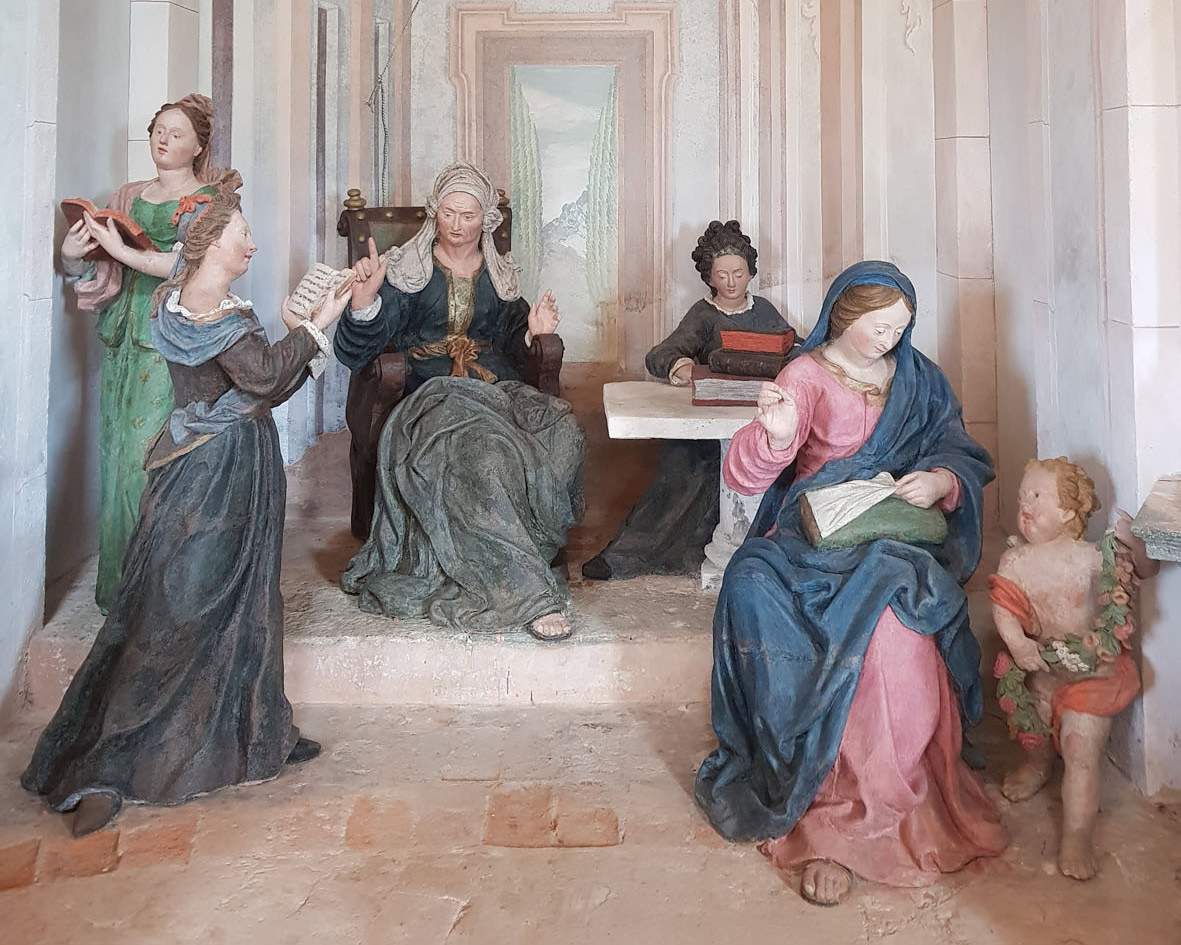Extensive restoration work at the Sanctuary of Oropa (Biella) has ended. The operations were concluded with the intervention on the fourth chapel of the Sacred Mount, dedicated to the Abode of Mary in the Temple: 250 square meters of frescoes, 106 terracotta artifacts, 102 life-size statues and various other materials were recovered. The chapel is a remarkable 18th-century complex where everything concurs to represent a hypothetical interior of the Temple of Jerusalem where we find the Madonna seated at a work table, accompanied by several young women intent on a variety of activities. The chapel was built beginning in 1662, the year in which it was commissioned: work went on for about a decade and then came to a halt until 1711, when it was resumed and completed a few years later. The statues were finished in 1718 and are all the work of Pietro Giuseppe Auregio, while the wall paintings were done by Giovanni Galliari, who was a painter and set designer active in important centers (from the Royal Palace of Turin to the Venaria Reale, from Crema to Milan).
The restorations had become necessary because of the deterioration suffered by the works: the plaster of Galliari’s paintings, in particular, was chalking in large areas, and the colors had blackened due to water infiltration. The intervention therefore made it possible to recover the bright colors of the paintings by recomposing the decorative motifs and stitching up the gaps with the full recovery of the decoration.
“The statues,” explains Paola Aglietta, delegated administrator of the sanctuary, “had been repainted in the 1970s with very bright and staggered colors, using industrial paints that made the figures awkward and caricatured. The complexions were yellowish, with eyes, cheeks, lips and eyebrows badly repainted by a craftsman with very poor quality solutions.”
“The restoration revealed, beneath the ugly altered hues that similarly disfigured all the groups of sculptures on Sacro Monte in the last century,” says Elena De Filippis, director of the Sacred Mounts Management Authority, “a remarkable and unsuspected artistic quality, refined modeling, and the expressiveness and delicacy of the faces, especially the children.”
The restorations, however, may not end there. “Certainly,” Paola Aglietta concludes, “the other chapels of Sacro Monte will also prove to be of the same quality: an invitation to industrialists and the Biella business community to support future restorations. Perhaps through a binomial between Sacro Monte and a company active in the textile field that can thus enhance its vocation and, why not, resume and repropose valuable ancient decorative solutions and modules from the costumes of the figures carved in our and their Sacro Monte.”
“In the face of the evidence of such refined statues and paintings,” hopes the president of the Sacred Mounts Management Authority, Renata Lodari, “we trust in a new pride and renewed participation of the Biella community in the restoration of Sacro Monte, of which we hope that this will be the first in a long series of construction sites!”
 |
| Restoration work at Oropa Shrine ends. Paintings and statues recovered |
Warning: the translation into English of the original Italian article was created using automatic tools. We undertake to review all articles, but we do not guarantee the total absence of inaccuracies in the translation due to the program. You can find the original by clicking on the ITA button. If you find any mistake,please contact us.